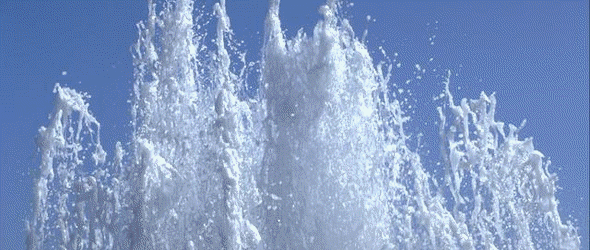
| THE HANDSTAND | APRIL2011 |
water
ENVIRONMENT

[Comment] A dry future without water
Next year the commission will present a "Blueprint to Safeguard European Waters" (Photo: Notat)
Today @ 08:48 CET
EUOBSERVER / COMMENT - Today is World Water Day. And who doesn't need water? Good quality water is vital, not just for drinking but for nature too. It is also a vital ingredient of many economic activities such as agriculture, food and energy production, tourism, and in the manufacture of everyday goods.
Only a tiny proportion of our blue planet's water is freshwater. So it's vital to use it efficiently. And even in Europe, the future availability of water is by no means guaranteed. This is the thinking behind World Water Day, a day to celebrate this most precious of all natural resources, and a good day to take stock of the many pressures facing our water resources, in the EU and around the globe.
And we need to take stock because water is under pressure like never before - especially in our cities. This is why this year's World Water Day has an urban focus. Cities make up only two per cent of the earth's surface and yet they are home to half the world's population. The urban population is said to be growing by two people every second. This growth is undermining whatever progress we make in making sure that the some of the poorest parts of the world have access to water and sanitation.
Climate change is adding to the pressure, by increasing water scarcity, droughts and floods. Over the past ten years Europe has suffered more than 175 major floods with resulting death, displacement and significant economic loss, which some estimate as high as €100 billion.
Yet we continue to waste it. Experts say that 20-40% of Europe's available water is lost through leaks in the supply system, dripping taps and unsustainable irrigation. This is a leak that needs fixing – urgently.
The solutions need to be found at many levels. Within the EU, a Water Framework is in place to manage Europe's waters through its natural 'river basins'. Water managers, the sectors affected and the public can cooperate to safeguard ground and surface waters. Member States assess the main problems for each river basin district and identify the specific measures needed to achieve environmental quality objectives. We want to get ‘good status' for all European waters by 2015.
It's a tough challenge, and although the main legislation is already in place, the EU needs to deal with those emerging challenges I have already mentioned. That's why, next year, the Commission will present a "Blueprint to Safeguard European Waters", aimed at ensuring there is enough good quality water to go round.
The Blueprint will encourage a move towards what we call 'prevention and preparedness'. The thinking is that this will ensure a sustainable balance between water demand and supply, taking into account the needs of both humans and natural ecosystems.
It's likely to give us the first indications for water efficiency targets at EU level, taking into account the great variety of different contexts across economic sectors and geographical areas. All of this will not be possible of course until we are able to measure the gap between water demand and water availability over the next ten to forty years.. To that end, the European Environment Agency is now working on water and ecosystem accounts, which will give us the information on which we can base our EU targets.
The Blueprint is broad and ambitious. It will set out measures that can be widely introduced across the EU. Things like green infrastructure, for example, which could include the reforestation or the restoration of floodplains, soil management and sustainable urban drainage systems. And it will create incentives to avoid wastage and encourage investment in innovative technologies as well as improving water efficiency and addressing issues such as pricing, taxation and the removal of harmful subsidies.
But World Water Day is not just about Europe. It is a global celebration, and the availability of water is a cause of global concern. It is most pressing in developing countries, where cities gain an average of five million residents every month. Recent studies show that competing global demands for scarce water resources could lead to an estimated 40% supply shortage by 2030. Predicted population growth will increase the pressures on water availability and food and energy production. The Blueprint will reinforce our commitment to helping to deal with these pressures as well as the achievement of the Millennium Development Goals on access to drinking water and sanitation.
Water is then a local, national, international and global issue of the most pressing kind. We are working hard to apply ourselves internationally where we can and as demand for water continues to rise in Europe, we will need to ensure that other 'water-reliant' policy areas – agriculture, regional, energy, industrial, transport and research policies all have the philosophy of water protection, saving and efficiency built-in.
There is another level of course…the individual level. And here we can all play our part by thinking about how we use our water. Because if we don't, we could be looking at a pretty tough, dry future.
The writer is European Commissioner for the Environment